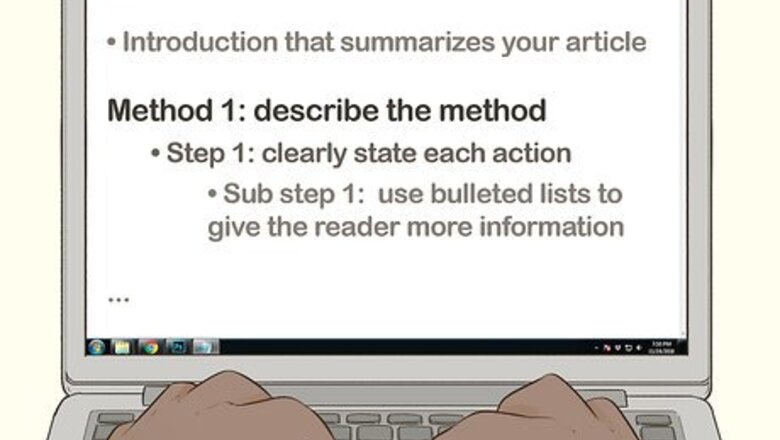
views
- Start with an introduction that tells readers what your article is about.
- Create a step for each action the reader needs to take to accomplish their goal.
- Use clear, specific, actionable language so readers know exactly what to do.
Pre-Writing Your Article
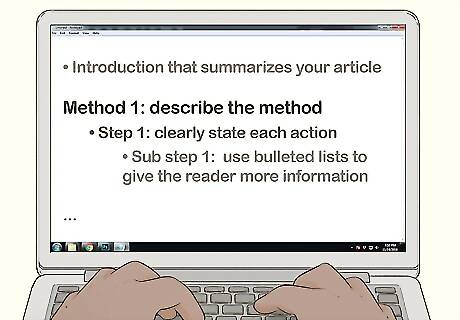
Choose a subject you know a lot about. Your topic can be anything you want it to be. If you’re new to writing how-to articles, it’s a good idea to start with a topic you’re comfortable discussing. If you have any special skills or training, or if you’re really good at doing something, that could be a great start for your first how-to! For instance, if you’re really crafty, you might write an article like “How to Turn Bottle Caps into a Picture Frame” or "How to Store Your Yarn." If you work from home, you might write an article like “How to Manage Your Time Working From Home” or "How to find a Work-From-Home Job." If you're musical, you might decide to write something like "How to Write a Song" or "How to Learn to Play the Piano in 2 Weeks." Tip: No matter where you’re publishing your article, it’s always a good idea to do a search to make sure there isn’t something similar on the site already.
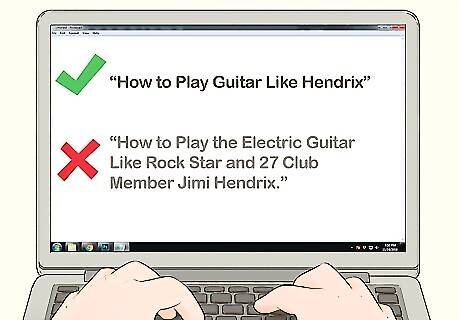
Choose a clear, succinct title. The title should clearly tell the reader what your article will tell them how to do. An easy-to-digest title will give your article an instant advantage over one with a wordy or confusing title. Also, your title should have good grammar and shouldn’t contain any spelling errors. Picking your title at the beginning of the writing process can help to keep your article on topic. For instance, “How to Play Guitar Like Hendrix” is a better title than “How to Play the Electric Guitar Like Rock Star and 27 Club Member Jimi Hendrix.” Also, a title like "How to Change the Oil in a Honda Civic" will give the reader a clear idea of what to expect, whereas a title like "Car Maintenance" is too vague.
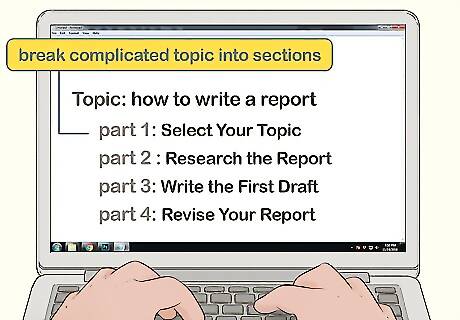
Use multiple parts to describe a complicated topic. If your article details a particularly long or complex process, it can help to break your steps into sections. Each section should then contain the steps for a distinct part of the procedure. An article on farming corn, for instance, might have separate parts for the sowing process, caring for the corn as it grows, and harvesting the corn.
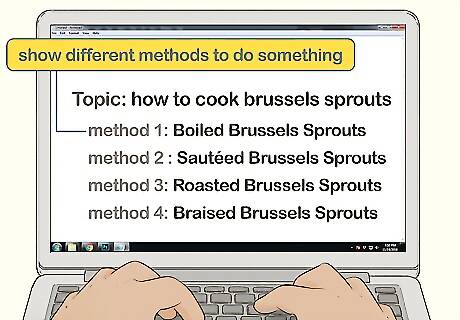
Describe different methods if there are multiple ways to do something. Sometimes, you might need to include different methods for accomplishing the same task. This might be because different techniques can be used to reach the same goal, or perhaps there are slightly different versions of the method to get a different result. Either way, make sure each method explains a specific way the process can be done. If you’re writing an article on cooking lobster, for example, you can have a method on boiling the lobster and a method on grilling the lobster.

Tailor the content and tone to the intended audience. How-to articles can be short or long, funny or serious, specific or general, technical or casual—there’s no hard and fast rule. To decide on the tone of your article, try to pinpoint whether your reader is someone who’s dealing with a serious issue, trying to learn something, or just looking for fun articles to read. You can also consider the general age of your reader to ensure you don’t write over their head. For instance, an article on How to Make Paper Spitballs is probably going to be read by bored kids looking for a laugh. A lengthy section on the effects of air resistance on projectile motion could bore your audience to tears. Instead, keep the article short and lighthearted. On the other hand, an article on How to Solve Differential Equations shouldn’t have much in the way of jokes. People who read this article are likely trying to educate themselves or complete a homework assignment. The tone should be academic and professional. If you’re writing an article like How to Be Strong After a Breakup, try to keep your tone compassionate and understanding, and give the reader heartfelt advice on how to move on after the end of a relationship.
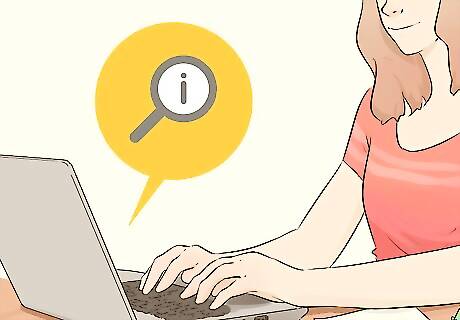
Research the subject using reliable sources. Even if you’re an expert on a subject, it can help to supplement your article with reliable sources. Look for articles written by experts in the field and published on reputable websites, like medical journals, authoritative blogs, and government websites. Also, try to avoid using sources that just compile information from other places, like Wikipedia. If you use sources to help you write your article, always rewrite the information in your own words. Copying from a source word-for-word is called plagiarism, which you should avoid at all costs. At the very least, your article will seem less authoritative, but at the most, you could get in trouble for copyright infringement. Avoid using sites that exist to promote a product or a service, as that’s considered content marketing. If the site has a shopping cart or a “Shop” tab under the main menu, it’s usually a good sign the source is content marketing. Check out the wikiHow guide on how to reference sources here: https://www.wikihow.com/Reference-Sources-on-wikiHow.
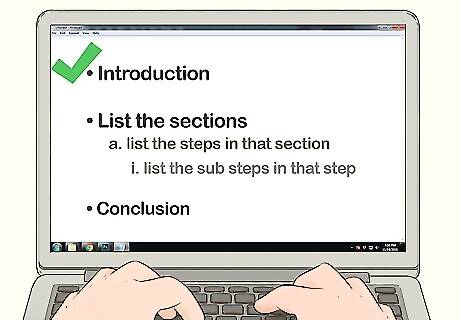
Write an outline to help keep yourself organized. Once you’ve decided on the format of your article and you’ve started gathering information from your sources, start to fill out a rough outline for your article. Put every step of the process on its own line, then include any relevant information you’ll need to know for each step. This can help you avoid missing any steps in your article, but it can also streamline the writing process, since you’ll just have to fill in the outline when you’re finished.
Writing out the Steps

Open with an introduction that summarizes your article. At the beginning of any how-to article, open with a brief introduction that lets the reader know what the article is about. Explain the process briefly and let the reader know about any important tools or equipment they’ll need for the task. Also, try to let the reader know why they might want to take on the steps, like getting a better sound if they tune their guitar. Your introduction should only be about a paragraph long. If it’s any longer than that, the reader might lose interest before they get to the steps. For instance, if you're writing an article like How to Train Your Cat to Wear a Harness, your introduction might tell the reader the benefits of walking a cat on a harness, and encourage them that they'll have a better chance of success if they're patient and consistent. You might also indicate what materials are best for a cat harness.
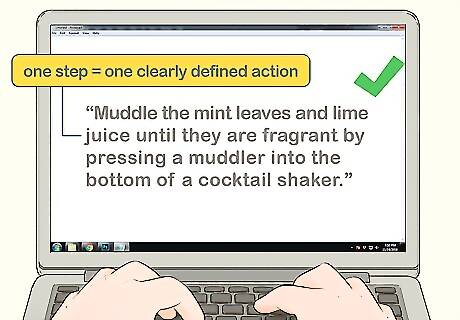
Write one step for each action the user needs to take. No matter how simple a step seems, it's important to include everything in your how-to. If you skip something because it seems obvious, and a reader doesn't know to do it, then they might end up missing something important from their project. For instance, in a recipe article, always tell the reader when they should preheat the oven. Tip: It’s easiest to cite any sources you use during the writing process. If you wait until the end, it can be hard to remember where you got your information from.

Organize the steps in chronological order whenever possible. If your reader is following along with your how-to, you don't want to surprise them with something they should have already done. Make sure all of the steps are arranged in the order that your reader will need to complete them. For example, if you're describing how to paint furniture, you would tell the reader to prime the object, let the primer dry, then sand the primer, all before you tell the reader to start painting. If you tell the reader to start painting, then mention that they should have primed the piece first, the reader might have to sand down the piece and start over.
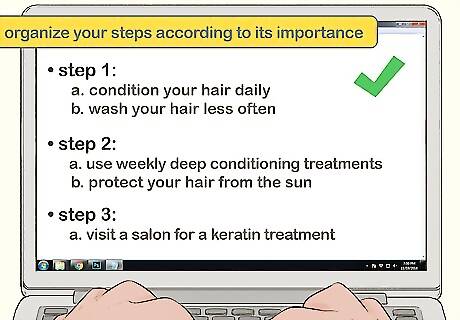
Follow a logical order if the process isn't chronological. Not every how-to will deal with a simple progression. If the process isn't made up of one step ordered after another, try organizing your steps according to what your reader should try first or what they'll need to do most often. If you're writing a how-to on caring for damaged hair, for instance, your earlier steps could deal with conditioning your hair daily and washing your hair less often, followed by steps on using weekly deep conditioning treatments and protecting your hair from the sun, then finally less common options like visiting a salon for a keratin treatment.
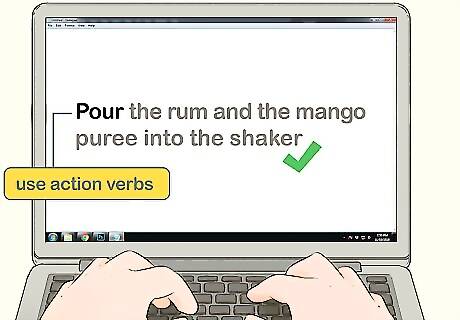
Use clear, commanding language to describe your steps. Tell the reader what to do in specific language, using action verbs like "Write," "Apply," "Cut," or "Mix." Try to explain each step as clearly and simply as possible. After all, the purpose of your article is to teach someone to do something they've never done before. Avoid using vague phrases for your step titles, like “Be prepared” or “Know what you want to do.”

Address the reader directly. You want each reader to feel like the instructions apply to them specifically. With that in mind, each step should address the reader with words like “you” or “your.” However, avoid using first person words like “I,” “me,” or “our.” This will make your article easier to read, and it will make the reader feel more connected to your instructions. For instance, in an article like How to Drive, you might say something like, “Check your mirrors before you start the car.” Then, in the wrap text for the step, you could detail how the reader can adjust the rearview and side mirrors in their car. In a baking article, you could say something like, "Stir the melted butter into your dry mixture." Avoid making assumptions about the reader’s gender. For instance, the reader of an article on how to apply mascara isn’t necessarily a female. Also, don’t assume your readers necessarily live in the same country as you. Remember to include both metric and imperial conversions for any measurements you include in your article.
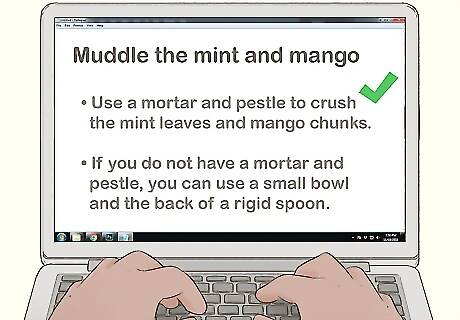
Include substeps or bulleted lists to give the reader more information. Long blocks of text can be intimidating for a reader, and they can sometimes skim over important information. To avoid this, break up long steps with substeps or bulleted lists. You can also use substeps to give the reader examples or to go into more detail about a subject. For instance, if you’re writing an article on How to Write a Thank You Note, your step might tell the reader to open with a direct acknowledgment of the gift you received. Your substep might then include scripting, such as: “Try saying something like, ‘Thank you so much for sending me flowers for my birthday!’”
Adding the Finishing Touches

Include a list of supplies or ingredients, if there are any. If your article requires additional supplies or ingredients in order to complete the steps, you should include these in a separate list somewhere at the beginning or end of your article. Recipes, crafts, and home improvement projects all commonly require these sections, but even if your article doesn’t fall into one of these categories, include a list if you there are any materials your readers will need. For wikiHow articles, the Ingredients list should go at the beginning of the article, while a Things You’ll Need list for supplies would go at the end. Articles on cooking will often require both an Ingredients section (for the actual food) and a Things You’ll Need section (for supplies like a pan, wooden spoon, microwave, etc).

Include citations for any sources you used in your article. Although it's best to add in your citations during the writing process, it's always a good idea to go back through your article and check your sources after you're finished writing. Verify that you've cited any information that came from external sources, check the formatting of your sources, and triple-check that you didn't copy any of the information verbatim, since plagiarism can be a serious offense. It can help to have a separate document where you keep your notes and reference information so you can easily refer to it when you're adding in your citations.
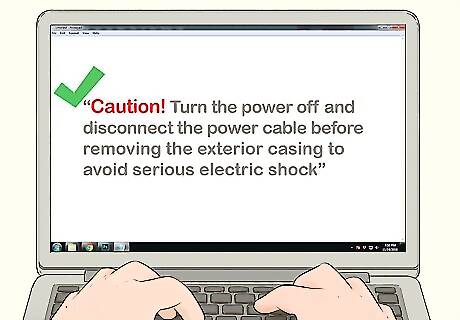
Add additional tips, cautions, or advice. After the main steps, use a Tips or a Warnings section for any tidbits that didn’t quite fit into the body of the article. For instance, you might suggest alternative supplies, clarify common mistakes, or provide solutions to common problems within the process. If there are any potential dangers involved in the process, provide clear, explicit warnings. You can even use bolded text to call extra attention to especially important warnings. For instance, in an article on how to install a fan in a computer, you might say: “Caution! Turn the power off and disconnect the power cable before removing the exterior casing to avoid serious electric shock.”

Use photographs or drawings to enhance your steps. Not only can pictures make your article more visually appealing, but they’re also a great way to help clarify tricky instructions. For instance, an article on building a chair needs pictures, since it’s very difficult to convey the precise positions of the interlocking wood pieces through text. If you have a good-quality camera or you know how to draw, you can provide pictures for the article yourself. If neither of those are good options for you, you might want to hire a professional illustrator.
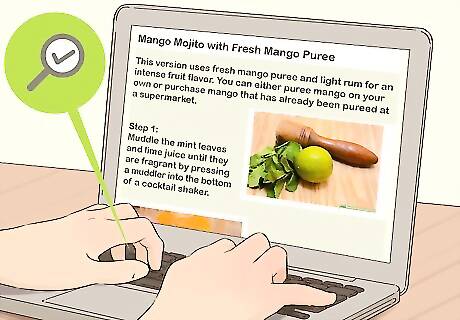
Proofread carefully for errors. After you’ve finished writing your article, read through it carefully. Review your spelling, punctuation, grammar, and overall style. Obvious mistakes will make you seem less knowledgeable about your subject, even if your content is very good. Also, make sure that all of steps are easy to follow and your images match the steps they’re attached to. For instance, if you're writing an article on How to Play Guitar, but you spell it "giutar" throughout the article, your readers won't be inclined to take you seriously. Try typing your article in a word processor with a built-in spell checker, or install a third-party spell checker like Grammarly or the Hemingway app.
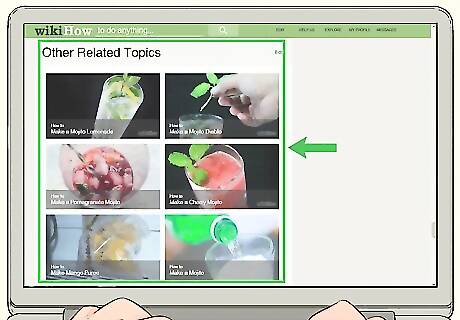
Direct users to other articles. A well-written how-to will pique readers’ interest in the article’s subject. It can be useful to include links to other how-to articles that cover related topics. Generally, these links will be in the form of a short list at or near the end of the article. These articles should cover articles whose information overlaps with your own, or processes from the same general field. For instance, an article on How to Perm Your Hair might include links like: Care for Permed Hair Get Rid of a Perm Straighten Permed Hair Style Permed Hair
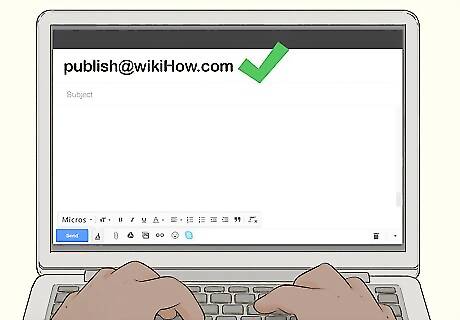
Submit your article. The process for submitting an article will vary depending on where you’re publishing it. If you’re writing on your own blog, for instance, you would probably paste the text into a text editor on your platform and hit “Publish.” If the article is for a magazine, you’ll probably need to submit it to an editor. To submit an article on wikiHow you can either click on “Help Us,” then “Write an Article,” or if you’ve already written the article, you can email it to the publishers at [email protected] and they’ll post it for you.

















Comments
0 comment